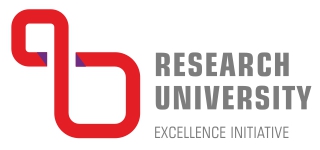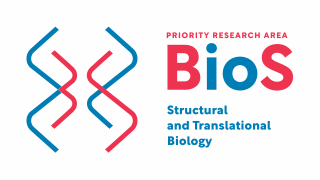Beata Rysiewicz PhD
phone: 538 629 891, e-mail: wbbib.bioobrazowanie@uj.edu.pl
Bioimaging Laboratory and Flow Cytometry Laboratory enable measurements with Confocal microscopes: STADYCON (Abberior) and Stellaris (Leica) or cell sorting by FACS (fluorescence-activated cell sorting method MoFlo XDP (Beckman Coulter).
Laboratory equipment is available for all members of the Faculty of Biochemistry, Biophysics and Biotechnology, and other units within Jagiellonian University. Some of the methods are also available for external entities.
- Rules for the Bioimaging Laboratory
- Rules for the Flow Cytometry Laboratory
RESERVATIONS
Equipment reservations for the defined time can be made through electronic forms (Microsoft Forms) one month ahead at most and no later than one day before planned measurements. The reservation order is based on the time the form is filled. The minimal time of reservation is one hour.
PRICES-LIST
STEDYCON microscope (Abberior):
- FBBB members – 50 PLN/h
- researchers from other JU facilities – 105.01 PLN/h
- external researchers – 140 PLN net/h
Leica Stellaris 5 with micromanipulation system*:
- FBBB members – 70 PLN/h
- researchers from other JU facilities for the project realization (without indirect costs for FBBB)– 133.05 PLN net/h
- researchers from other JU facilities – 154.06 PLN net/h
*Due to the program rules, which enabled the purchase of the microscope, usage cannot be offered to external institutions on the commercial rules.
If the user has to change or dismiss the reservation, that should be done at least two hours before planned measurements. Otherwise, the user will be held accountable for the reservation, and costs will be counted according to equipment prices.
The system combines confocal microscopy with STED nanoscopy, enabling image acquisition with up to 30 nm resolution.
Fluorescence excitation:
- 405 nm (laser diode CW)
- 488 nm, 561 nm, 640 nm (3 pulsed laser diode)
- STED laser (775 nm)
The signal is collected with four avalanche photodiodes in the single photon counting mode in wavelength spectra 420 nm – 480 nm, 505 nm – 545 nm, 575 nm – 625 nm, and 650 nm – 700 nm.
Available objectives:
- UPlanXApo (extended apochromat) 100x/1.45 NA (oil immersion),
- UPlanFL (semi-apochromat) N 10x/0.3 NA,
- UPlanFL (semi-apochromat) 20x/0.5 NA.
STEDYCON smart control software:
The files can be saved in .tiff .png .pdf format as raw data or after basic image processing (noise reduction, smoothing, with the scale, color bar, etc.).
Microscopic observation can be done on the fixed or live samples with the type BL incubator with CO2 control (OKOLAB SRL).
In the case of STED microscopy, the Laboratory recommends fluorophores dedicated to this technique (with higher brightness and photostability). We also discourage dyes like DAPI or Hoechst usage (due to the negative impact on the background). Moreover, the material and thickness of the surface on which cells are may have a negative effect on the digital image resolution (thickness should be 0.17 mm, material: high-class microscope slides np. Hecht–Assistent, Menzel, Marienfeld–Superior, chamber slides np. Lab–Tek Chamber Slide System (Thermo Fisher Scientific), Ibidi µ–slides/µ–dishes (Ibidi GmbH), Mattek glass bottom dishes (MatTek Corporation)).
*Equipment purchase was financed from the program Excellence Initiative – Jagiellonian University (BioS PRA) for FBBB.


Micromanipulation system (Eppendorf) integrated with confocal microscope (Leica Stellaris)
Level 1, room 4.1.15
The cell micromanipulation system coupled with a confocal microscope enables targeted interference in single-cell physiology, including the precise introduction of biomolecules, markers, or organelles into cells; exposure of cells to targeted chemical and physical stimuli; and cell operations, including isolation of single cells. The microscopic system with the environmental chamber allows for intravital analysis of the effects of micromanipulation in single cells in real-time, in transmitted and fluorescent light, including analysis of cell dynamics and their precisely defined regions and/or organelles.
The equipment was purchased as part of the road map (financing from the state budget, targeted subsidy for the implementation of investments related to scientific activities).
Fluorescence excitation is possible at wavelengths:
- 405nm (power 50mW),
- 488nm (power 20mW),
- 561nm (power 20mW),
- 638nm (power 30mW).
The signal is collected by point, multi-compartment spectral detectors (Power HyD S detectors), a hybrid of a photomultiplier tube, and an Avalanche Photo Diode. They enable adjustment of the detection bandwidth from 5 nm to the full detection range of the spectral detector. Accuracy of spectral settings of detectors – 1 nm.
Available objectives:
- Plan semi-apochromat 5x/0.15 NA,
- Plan semi-apochromat 10x/0.3 NA,
- Plan semi-apochromat 20x;/0.4 NA,
- Plan apochromat 20x/0.75 NA (multi-immersion objective (water, glycerin, and oil immersion)),
- Plan apochromat 40x/1.3 NA (oil immersion),
- Plan apochromat 63x/1.4 NA (oil immersion),
- Equipment for observation in the Nomarski contrast.
LasX software:
Files can be saved in the .lif .tiff .png format as raw files or after basic manipulation (noise-free, smoothed, with scale, color bar, etc.). Additionally, the program enables the reconstruction of 3D objects and deconvolution.
Environmental chamber with a temperature control system. Additional mini-incubator with a CO2 concentration regulation. Anti-vibration table.
The microscope is equipped with a manipulation system (Eppendorf):
- Cellular micromanipulator: working angle in the range of 0–90°; speed range of 0-10.000um/s; possibility of rotating the motors in the horizontal plane from -45° to 90°.
- Micromanipulator for microinjection: the ability to select and program additional functions (min. five positions; limitation of movement in the Y axis; upper and lower limits to prevent capillary breakage, capillary cleaning); step size (computational resolution <20 nm); the possibility of mechanical adjustment >80 mm.
- Electronic microinjector (volume range: femtoliters -> 100 pL) with a built-in compressor, requiring no additional external pumps/compressors. Possibility of performing reproducible, serial microinjections into adherent and suspended cells.
- Electronic microinjector (volume range: 100 pL -> 1 mL).
- Pneumatic microinjector.
- Oil microinjector.
- Piezoelectrically assisted micromanipulation device.
The laboratory does not provide the capillaries necessary to perform micromanipulation experiments.
Cell sorter in the open-air system – MoFlo XDP (Beckman Coulter)
The sorter with five lasers enables the electrostatic sorting of drops (cells) using conventional compensation. The technological solutions allow the multidirectional sorting of cells into Falcon, FACS tubes, Eppendorf tubes, and 96-well or 384-well plates.
Solutions include built-in liquid flow calibration, drop delay, and fluid flow imaging, enabling multi-well plate sorting. Accuracy is increased by hardware solutions that allow the detection of a signal from a single drop flowing through the system.
The sorting process can be performed in a laminar chamber (similar to class II laminar) and with temperature control.
The system enables sorting cells labeled with fluorescent proteins, immunophenotyping, and genomic and gene therapy-related tests.
To select appropriate solutions regarding fluorophores, excitation wavelength, or a set of emission filters, don't hesitate to contact the laboratory staff at wbbib.bioobrazowanie@uj.edu.pl.

